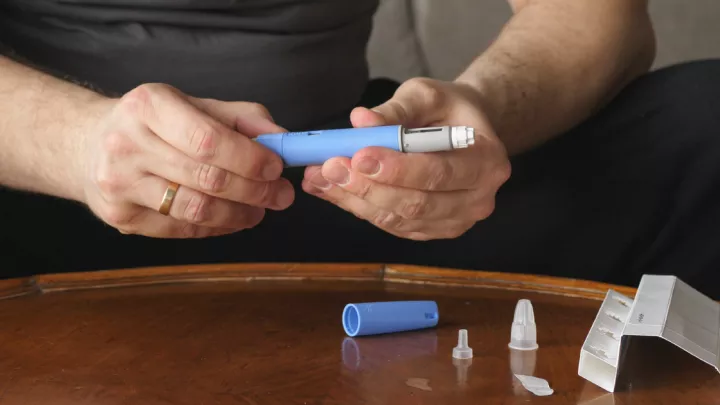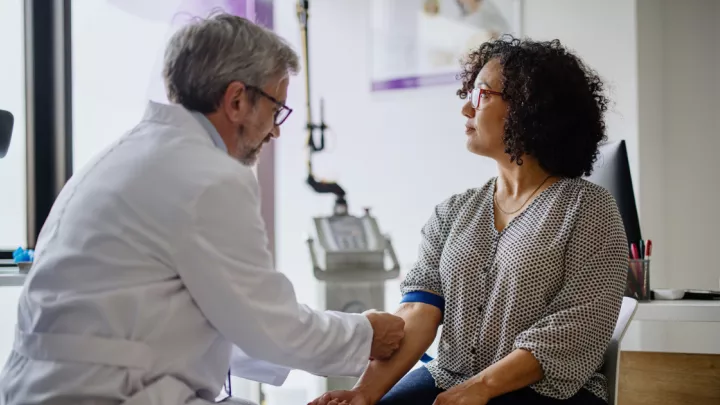Experiencing symptoms related to uterine fibroids? Consider minimally invasive fibroid embolization

Uterine fibroids are growths that form inside the uterus, within the uterus muscle wall or on the outside of the uterine wall. They are not cancerous, and most women do not know they have them. However, uterine fibroids can cause heavy or prolonged menstrual bleeding, painful cramps, and pressure in the lower abdomen, in addition to other symptoms.
If you’re experiencing severe symptoms and want to avoid drugs or surgery, it may be worth looking into uterine fibroid embolization. This minimally invasive procedure helps shrink fibroids while preserving the uterus.
Below, Nebraska Medicine interventional radiologists Joseph McBride, MD, and Maria O’Malley, MD, discuss frequently asked questions about uterine fibroids and the benefits of fibroid embolization.
What causes uterine fibroids?
Studies show that fibroids tend to grow when hormone levels are higher, such as during pregnancy, and shrink when hormone levels are low, like during the transition to menopause.
Several risk factors can affect your chances of developing fibroids, such as:
- African American ethnicity
- Higher body mass index
- Family history of fibroids
- Not having children
- Starting your period at a young age
- Late age for menopause
How do I know if I have uterine fibroids?
Some patients don’t have any symptoms. Others experience varying degrees of symptoms, such as:
- Excessive bleeding during periods
- Bleeding between periods
- Bloating or a feeling of fullness in the abdomen
- Frequent urination or inability to empty the bladder
- Lower back and pelvic pain
- Pain during sex
- Constipation or feeling pressure on the rectum
- Long-term vaginal discharge
Talk to your doctor if you are experiencing any of the symptoms above so that further diagnostic tests, such as an MRI or a CT scan, can be performed to confirm if you have fibroids. While most fibroids don’t cause serious complications, some women experience severe pain, heavy bleeding or pelvic discomfort.
If you are experiencing these symptoms and want to pursue treatment, your doctor may recommend:
- Shrinking the fibroid through fibroid embolization.
- Myomectomy or surgery to remove the fibroids.
- Hysterectomy or surgery to remove the entire uterus.
What is uterine fibroid embolization, and who is a good candidate?
This procedure is performed exclusively by interventional radiologists, specially trained to do minimally invasive procedures. During UFE, a thin tube called a catheter is inserted into an artery in your leg or wrist and guided via X-ray to the uterine arteries that feed the fibroids. Microscopic particles are then injected, killing all the fibroids at the same time.
You may be a good candidate for uterine fibroid embolization if you are experiencing symptoms from fibroids and wish to:
- Avoid medication or surgery – UFE offers an effective and reliable alternative to medication or surgery.
- Recover faster – Recovery time is typically minimal, lasting only one to two weeks, and many patients can return home the same day. In comparison, surgical options can require a lengthy stay in the hospital followed by six to eight weeks of recovery.
- Keep your uterus – UFE preserves the uterus, though rates of pregnancy are not well documented. If you do want to get pregnant after fibroid treatment, discuss your plans with your doctor in case other options may be better suited for you.




